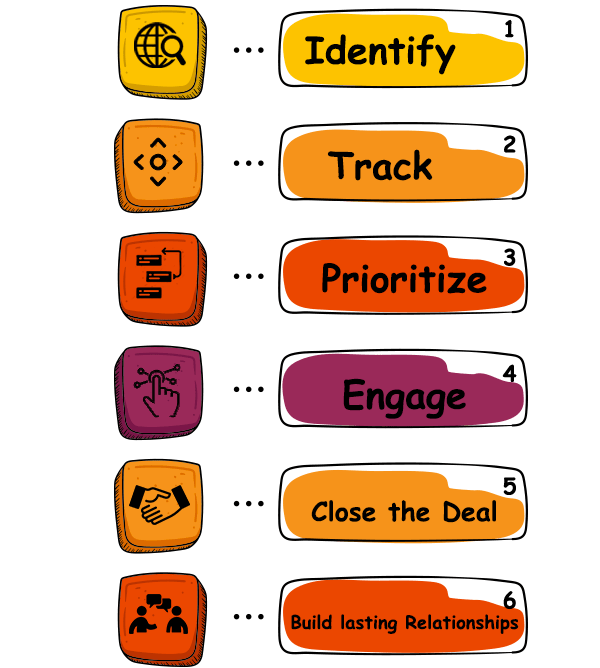How to Develop an Unceasing Branding Strategy for Your Start-Up

More than 100 million start-ups are launched every year, which is about 3 start-ups per second, and guess what? Most of these start-ups can be found in the real estate, finance and insurance sectors.
While some of these startups catch our eye, others reach the brink of oblivion too soon!
Why do startups fail in the first place? As per a report by Statista, only 29 percent startups fumble because they run out of funds. While a lot of them get out competed because of their poor marketing or branding strategies.
Unique Idea + Standout Strategies = Brand Success
Failure of a startup can be from a variety of reasons and having a poor branding strategy is one of them.
Effective branding is the lifeline of ant thriving business. Companies like Apple, Airbnb, and even Coca Cola are successful because they know how to sell their idea to the right audience at the right time.
Three “C’s” to Keep in Mind:
All you need to do is keep the three “C’s” in mind: Clarity, Consistency, and Creativity while following these steps:
| Clarity | Consistency | Character |
| Convey your brand value in your brand messaging, the core reason why your brand exists! | Your brand messaging should be consistent across all networks, be it social media, website or paid campaigns | Your customers would prefer interacting with a brand that responds to them like a real person. A brand that has a story to tell! |
Step 1: Find Your Target Group
As much as we would like the whole world to be our customers, it is impossible and unrealistic to think so. The more varied the target audience, the lesser is your chance to be effective with marketing strategies.
So how to ensure that you have chosen the right target audience?
Research helps understand the priorities of your target audience, understand their needs and decide on a message tone that goes well with them. To select your target group, you can use the funnel approach.
You can segregate your target customers based on different demographic and psychographic factors. This will help you get a detailed insight about which target groups will be interested in your product or services.
Step 2: Differentiate from The Existing Competitors
To stand out from your competitors, you need to find your purpose. Your purpose should be different from the rest of the brands in the market. It can be targeting a new problem that the customer thought never existed or offering a unique solution to an already existing problem. You can provide a solution to a problem with a hint of your own style.
Let’s have a look at this commercial by Nike where Michael Jordan talks about ‘Failure’. Yes, you read it right! A Nike commercial where Michael Jordan says “I have failed over and over and over in my life this is why I succeed”.
Don’t we all relate to this line! This is where Nike made an impact through storytelling, rather than pushing their products for sale. And this approach truly differentiates Nike from its competitors. If you are ready to try, fail, fail again, and succeed in achieving your fitness goal, you will probably go for Nike!
Step 3: Choose the Right Brand Name
Don’t be in a hurry to name your startup. Do a proper research before jumping into any conclusion. By rushing to give your company a title, you will have to compromise with some truly awful names.
Follow the rule of thumb – Do you really need to explain how your brand name relates to your business, you certainly need to look for another name.
- You can create a name by several permutations and combinations.
- You can also translate a word that represents your brand to some other language.
- Your customers should feel a connect with your font, style, color and graphics of your brand name.
- A name should be selected in such a way that it represents your values and goals clearly.
The key is to keep it simple. You can create a name by several permutations and combinations. You can also translate a word that represents your brand to some other language.
But all this aside, the customers should feel a connect with your font, style, color and graphics of your brand name. A name should be selected in such a way that it represents your values and goals clearly.
Step 4: Finding the Right Voice and Tone
Visual guidelines are important for your business. This helps in keeping the colour and typography of your website pages, social media posts and paid ads consistent.
At the same time, you need to focus on creating emotional guidelines, that includes the voice and tone of the content you publish across all platforms.
Quirky banter between brands is not new, but how quickly Amazon responds to such tweets and with such an amusing reply is noteworthy. The brand sets the tone of quick delivery not just on their website for online orders but also on social media for faster replies.
Step 5: Create a Consistent Brand Image
Creating a consistent brand image is even more crucial for developing a branding strategy for your start-up. You can’t have different themes going on in your website and on other online accounts.
For maintaining a brand consistency, you need to take care of the following elements across all your platforms:
- Have a consistent aesthetic style in terms of font, color scheme, logo and images.
- Follow a uniform verbal style in terms of voice and tone.
- Have steady goals and values across both online and offline channels.
As an example of an engaging, branded content, take Calm, one of the most popular apps for Yoga and meditation. When you land on their website or social media pages, it’s clear what does it stand for – To help you find your calm!

Their website copy, photography, and overall content resonates the idea of getting into the calm zone to relax, sleep and rejuvenate. When you move over to their Facebook, the feeling is the same.

It’s seamless, and there’s no disruption in the overall marketing experience. Their brand consistency makes it so easy to fall in love with their idea.
Step 6: Build Your Brand Advocates
67 Percent of shoppers go by the recommendations when they are shopping online! – As per a study
Organic brand advocates are someone you cannot exchange for anything precious in this world! Brand advocates are your customers and employees who love your organizational values so much that they speak positively about it everywhere! So, how to have your own army of brand advocates when you are just starting?
How to Turn Your Customers into Brand Advocates
- Analyse Customer Responses: Customer service software like Freshdesk can help track the conversations around your brand on social media platforms
- Always Respond to both positive and negative responses on social media
- React Quickly to negative responses with quick fixes
- Accept Your Mistakes: This will help reflect on the human side of your brand
- Customer service is the Key: Provide outstanding customer service with your omni channel presence.
- Chat Live for Instant Query Resolution: Never ignore the power of providing instant resolutions to customer queries on your website. This is where live chat software comes in!
How Your Employees Can Become Your Brand Advocates
- Address their concerns
- Reward the performers
- Invest in their upskilling
- Pick those who are more vocal on social media
- Upskill them to be more expressive online, this will not just help with their personal growth but support your cause too.
Step 7: Understand Your Consumers’ Journey
Your branding strategy is not just about selecting the right brand name! It goes beyond that. To build a recurring customer base, you need to understand the customer journey from the moment they know about your brand to the stage when they become your customer and start sharing their post-purchase experiences.
But, where to start? Is understanding your customer’s journey is all about asking them a few questions at certain stages?
Well, it’s about mapping their context and purpose and prioritizing your efforts accordingly! Fortunately, software tools like Freshsales make the process of prospect segmentation and scoring much easier.

- Identify: Who is visiting your website
- Track: Which pages they are currently navigating through
- Prioritize: Based on their actions on the website, prioritize your prospects
- Engage: Engage with them as per their actions on the website – Did they use any Call to Action Button, how frequently they have visited your website in the last 7 days, have they visited important pages like pricing, comparison, check out page, etc.
- Close the Deal: Based on their interest, share personalized content with them and pitch your product accordingly.
- Build lasting Relationships: Once the deal is closed, stay in touch with them for feedback, up sell and cross sell.
There are multiple ways to control your branding strategy and you are missing out on massive communications opportunities if you ignore these points.
It’s all a matter of whether you want to spend your time telling your customers what your brand is, or have your customers tell you. The choice is yours!
Editor’s note: Looking for an appropriate CRM solution?
Fill out the below questionnaire to have our consultants guide you better.
Kalpana’s tech writing journey began in 2017 with Techjockey, and she truly belongs here! If she was not a technical content writer, she would have been a coder. Technical writing, especially for business software, is her passion, and she enjoys every bit of it. From addressing the pain... Read more



















